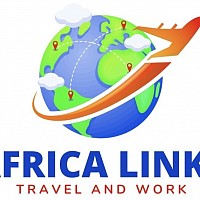TRAVEL WITH AFRICA LINKS TRAVEL AND WORK
Requirements Clink here to read more
Canada is the second-largest country in the world and is comprised of ten provinces and three territories. It is one of the world’s most multicultural countries with advanced technological infrastructure, vibrant cities, breathtaking natural wonders, over 40 national parks and reserves, 31,752 beautiful lakes, endless landscapes and coastlines, tundras, magnificent mountains, thousands of annual festivals and events, and much more. Canada also offers a world-class public healthcare and education system at no cost to its permanent residents and citizens. The country also offers a wealth of employment opportunities in a stable economy which makes it the perfect destination for job seekers and entrepreneurs. If you’re looking for a change of pace and scenery in one of the most diverse and welcoming communities in the world, then Canada is just the place for you!
Applying for a Canada Work Permit Visa involves several steps. Here’s a detailed guide:
1. Determine Eligibility
Before applying, ensure you meet the eligibility criteria:
- Job offer from a Canadian employer (for most work permits).
- Employer has a Labour Market Impact Assessment (LMIA), if required.
- Proof of qualifications for the job.
- Valid passport and travel documents.
- Sufficient financial resources to support yourself and any accompanying family members.
2. Gather Required Documents
Prepare the necessary documentation:
- Job offer letter.
- LMIA, if applicable.
- Proof of work experience and qualifications.
- Passport and travel documents.
- Proof of financial resources.
- Medical examination results, if required.
- Police clearance certificate, if required.
3. Choose the Type of Work Permit
Canada offers several types of work permits:
- **Employer-specific Work Permit**: Allows you to work according to the conditions on your work permit, such as the employer's name, the duration of work, and the location.
- **Open Work Permit**: Not tied to a specific job. It is available in specific situations, like for spouses of skilled workers or international students, or under specific programs like the International Experience Canada (IEC).
You can apply online or on paper:
- **Online Application**: Create an account on the Immigration, Refugees and Citizenship Canada (IRCC) website and complete the application form. Upload all required documents.
- **Paper Application**: Download the application package from the IRCC website, fill it out, and mail it to the appropriate address.
5. Pay the Application Fees
Pay the applicable fees for processing your application. This can be done online or as specified in the application instructions. Keep the receipt as proof of payment.
6. Biometrics and Medical Exam
- **Biometrics**: If required, you will receive instructions on how to provide your biometrics (fingerprints and photo).
- **Medical Exam**: Some applicants may need to undergo a medical examination by an IRCC-approved panel physician.
7. Wait for Processing
The processing time can vary depending on your country of residence and the type of work permit. You can check the processing times on the IRCC website.
8. Receive a Decision
Once your application is processed, you will receive a decision. If approved, you will receive a Port of Entry (POE) Letter of Introduction and, if applicable, a visa to travel to Canada.
9. Travel to Canada
Bring your POE Letter of Introduction and other required documents when you travel to Canada. At the port of entry, present these to the border services officer.
10. Obtain Your Work Permit
If all is in order, the border services officer will issue your work permit, allowing you to start working in Canada.
Additional Tips
- **Check Updates**: Stay updated on any changes in immigration policies or application procedures.
- **Seek Assistance**: Consider consulting with an immigration lawyer or a regulated immigration consultant for guidance.
- **Plan Ahead**: Start the application process well in advance of your intended start date to account for processing times and potential delays.
This process can be complex, but careful preparation and understanding of the requirements can increase your chances of a successful application.




